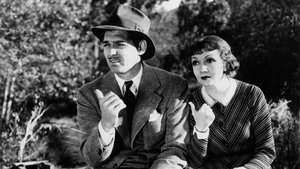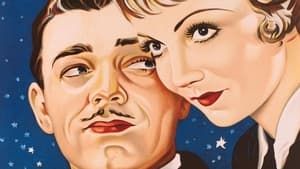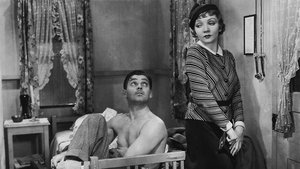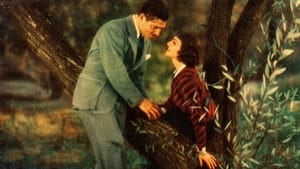Contact: [email protected]
Video Sources 0 Views
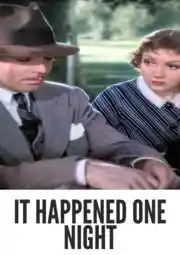
Synopsis
[ez-toc]




In the vast tapestry of classic cinema, some films transcend time, etching their place in the collective memory of moviegoers. One such timeless gem is “It Happened One Night Colorized” (1934), a romantic comedy directed by the incomparable Frank Capra. The film, which stars Claudette Colbert and Clark Gable, is celebrated for its wit, charm, and the magnetic chemistry between its lead actors.
Read Media File Transfer Agreement: Terms and Conditions
Read FAQ
A Glimpse into Hollywood’s Golden Age
Directed by Frank Capra, a cinematic luminary of Hollywood’s Golden Age, “It Happened One Night Colorized” holds a distinguished position in the annals of film history. The pairing of Claudette Colbert and Clark Gable was a stroke of casting genius, and their on-screen dynamic breathed life into a narrative that resonated with audiences during a time of economic turmoil and social change.
Released during the pre-Code era, a period marked by a lack of stringent censorship, the film showcased Hollywood’s bold approach to storytelling. It delved into themes that were considered risqué for its time, exploring the complexities of societal norms and challenging traditional expectations. As audiences reveled in the escapades of Ellie Andrews, a spirited heiress, and Peter Warne, a quick-witted newspaper reporter, “It Happened One Night Colorized” became a cinematic journey that mirrored the zeitgeist of its era.
The film’s success was not confined to the silver screen; it made a clean sweep at the Academy Awards, clinching five prestigious accolades, including Best Picture, Best Director, Best Actor, Best Actress, and Best Adapted Screenplay. This triumph catapulted Columbia Pictures into the limelight and solidified the film’s place as a cinematic masterpiece.
Unveiling the Narrative Tapestry
The narrative of “It Happened One Night Colorized” draws inspiration from the short story “Night Bus,” weaving a tale that unfolds on a nocturnal bus journey. Claudette Colbert’s portrayal of Ellie Andrews, a rebellious heiress, is a testament to her acting prowess. Opposite her, Clark Gable’s charismatic performance as Peter Warne, the resourceful reporter, adds layers of humor and depth to the storyline.
The film’s plot is a symphony of comedic escapades and heartfelt moments as Ellie, fleeing the confines of her privileged life, crosses paths with Peter, a newspaperman down on his luck. Their journey, filled with unexpected twists and turns, explores themes of love, companionship, and societal expectations. The chemistry between Colbert and Gable is palpable, transcending the black-and-white frames and leaving an indelible mark on cinematic romance.
The Art and Controversy of Colorization
In the ever-evolving landscape of film preservation and restoration, the concept of colorization has emerged as a double-edged sword. The process involves adding color to black-and-white films, a practice that has ignited debates among purists and cinephiles. While some argue that colorization compromises the authenticity of the original work, others see it as a means of revitalizing classic films for contemporary audiences.
In the case of “It Happened One Night Colorized 1934,” the decision to add color presented a unique challenge and opportunity. Filmmaking techniques of the 1930s, characterized by inventive use of sound and mobile cameras, contributed to the film’s original charm. Colorization, however, required a delicate balance to preserve the essence of a film that belonged to an era when silent films were still prevalent.
Advancements in technology have played a crucial role in the evolution of colorization, enhancing the quality of the final product. The intersection of colorization and restoration work has become a nuanced art form, allowing for the preservation of cinematic treasures while introducing them to new generations.
Exploring the Colorized Version’s Cinematic Impact
The transition of “It Happened One Night Colorized” from black-and-white to color brought forth a fresh perspective on the film’s visual storytelling. Cinematic techniques such as innovative use of sound, moving cameras, and back projection, which defined the filmmaking of the 1930s, gained new prominence in the colorized version.
The controversy surrounding colorizing a film originally rooted in the silent cinema era adds an extra layer of intrigue. How does the introduction of color impact the narrative and emotional resonance of a story that was initially crafted for a silent audience? These questions invite cinephiles to consider the delicate balance between preservation and reinterpretation as films traverse through time.
Reception, Legacy, and the Case for Color
Upon its original release, “It Happened One Night Colorized” was met with critical acclaim and box office success. The film’s influence extended beyond its immediate reception, earning it a place on the American Film Institute’s list of the 100 Greatest American Films. The legacy of “It Happened One Night” endures as a testament to its impact on the romantic comedy genre and its inspiration for subsequent generations of filmmakers.
The colorized version, despite initial skepticism, has found its own niche in cinematic appreciation. While purists may argue for the preservation of the original black-and-white presentation, the colorized edition provides a gateway for new audiences to connect with classic cinema. The debate between authenticity and accessibility underscores the broader conversation about how we approach and appreciate the cinematic heritage of the past.
The Enduring Popularity of “It Happened One Night Colorized”
Decades after its release, “It Happened One Night Colorized” continues to captivate audiences, standing as a testament to the enduring power of storytelling. The film’s universal themes, coupled with the timeless performances of Colbert and Gable, transcend the boundaries of time and technology.
Whether experienced in its original black-and-white form or the colorized edition, “It Happened One Night Colorized” remains a moving cinematic experience. The narrative’s resonance and the characters’ charisma persist, reaffirming the film’s status as a classic. The colorized version, while offering a contemporary twist, does not overshadow the intrinsic charm that has made the film a beloved piece of cinematic history.
Preserving Film Heritage: Balancing Nostalgia and Technological Advancements
As we navigate the delicate dance between preserving film heritage and embracing technological advancements, the discussion around colorization becomes emblematic of a broader cinematic dialogue. The importance of maintaining the integrity of original works is undeniable, yet the introduction of new technologies such as colorization and digital restoration should not be dismissed outright.
Preserving the legacy of classic films involves striking a balance between nostalgia and progress. While the original black-and-white films are invaluable time capsules of cinematic art, colorization and restoration efforts serve as bridges that connect past and present. Encouraging audiences to appreciate both versions fosters a deeper understanding of the evolution of filmmaking and the rich tapestry of stories that have shaped the history of cinema.
In conclusion, “It Happened One Night Colorized 1934” beckons us to reevaluate the boundaries of our cinematic appreciation. As we embark on this technicolor journey into old Hollywood, let us cherish the legacy of classic films while embracing the transformative power of colorization. The story of Ellie and Peter, now bathed in hues of nostalgia, continues to unfold, reminding us that the magic of cinema transcends the confines of time and technology.
